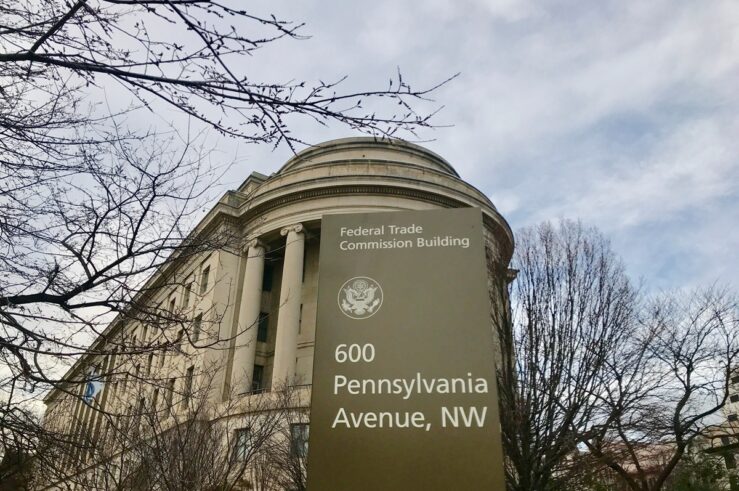Showing archive for: “FTC”
Reports of the Current FTC’s Intellectual Integrity Have Been Greatly Exaggerated
The Federal Trade Commission (FTC) has released its long-awaited report on pharmacy benefit managers (PBMs) as an “interim staff report.” And it’s yet another staff report that doesn’t name the relevant staff. On the one hand, it does contain some useful information on industry developments. On the other, it’s just not very good—at all. With ... Reports of the Current FTC’s Intellectual Integrity Have Been Greatly Exaggerated
Rounding Out the Roundup
In yesterday’s Agencies Roundup, I discussed the likely fate of the Federal Trade Commission’s (FTC) new rule banning most noncompete agreements, read through the lens of the Supreme Court’s Loper Bright decision. I thought the rule infirm to begin with—a somewhat foolish swing for the fences on a regulation that the FTC couldn’t possibly enforce. ... Rounding Out the Roundup
After Loper Bright, FTC Awaits Its Turn At-Bat
In an Agencies Roundup post several weeks ago, I revisited the Federal Trade Commission’s (FTC) newly adopted—and not-yet-effective—rule barring the use of noncompete agreements across much of the U.S. economy. It was not my first such post (my ninth, if I’ve counted correctly, and if readers will forgo armchair diagnoses of monomania). The last time ... After Loper Bright, FTC Awaits Its Turn At-Bat
FTC Alumni Response to FTC/DOJ RFI on Serial Acquisitions
As former antitrust enforcers and alumni of the Federal Trade Commission (FTC), we are pleased to submit these comments to the FTC and U.S. Justice Department’s (DOJ) Antitrust Division (DOJ) in response to your Request for Information on Corporate Consolidation Through Serial Acquisitions and Roll-Up Strategies (RFI). We have devoted significant portions of our careers ... FTC Alumni Response to FTC/DOJ RFI on Serial Acquisitions
The Waiting Game: Noncompetes, Google, Roll-Ups, and More
I’ll start with a bit of half-empty, half-full (and very partial) resolution in Federal Trade Commission (FTC) publicity. Losing by Winning or Just Losing or . . . ? A couple of weeks ago, the Wall Street Journal editorial board announced that: “Another Lina Khan Theory Loses in Court” And that was right, up to ... The Waiting Game: Noncompetes, Google, Roll-Ups, and More
Will the FTC Reinvigorate an Antiquated Law that Raises Prices?
The Federal Trade Commission (FTC) and Congress are showing renewed interest in a Great Depression-era law, the Robinson-Patman Act, that discourages sales discounts. This is bad news for hard-strapped American consumers, who have had to cope with prices that have risen more than 20% since February 2020. As such, reinvigorated enforcement of the RPA, a ... Will the FTC Reinvigorate an Antiquated Law that Raises Prices?
Should the Federal Government Regulate Artificial Intelligence?
Artificial intelligence is in the public-policy spotlight. In October 2023, the Biden administration issued its Presidential Executive Order on AI, which directed federal agencies to cooperate in protecting the public from potential AI-related harms. President Joe Biden said in his March 2024 State of the Union Address that government enforcers will crack down on the ... Should the Federal Government Regulate Artificial Intelligence?
The Best of All Possible Places to Work?
Are things looking up at the Federal Trade Commission (FTC)? Maybe, kinda, sorta? At the margin? That’s the agency spin. Before we get to the new public relations, let’s take a step back. Much ink has been spilled, and many pixels specified, over the performance of FTC management. Not a little of it has attended ... The Best of All Possible Places to Work?
All Roads Lead to Dallas: FTC Non-Compete Rule Set to Face Its First Legal Test in the Northern District of Texas
The sweeping prohibition on noncompete agreements promulgated by the Federal Trade Commision (FTC)—which would nullify 30 million contracts and preempt the laws of 46 states if it takes effect, as scheduled, on Sept. 4—is set for its first judicial test. In Ryan, LLC v. FTC, Judge Ada Brown of the U.S. District Court for the ... All Roads Lead to Dallas: FTC Non-Compete Rule Set to Face Its First Legal Test in the Northern District of Texas
The FTC Office of Patent Invalidation
The Federal Trade Commission (FTC) announced late last month that it had “expanded its campaign against pharmaceutical manufacturers’ improper or inaccurate listing of patents in the Food and Drug Administration’s (FDA) Orange Book, disputing junk patent listings for diabetes, weight loss, asthma, and COPD drugs, including Novo Nordisk Inc.’s blockbuster weight-loss drug, Ozempic.” Warning letters ... The FTC Office of Patent Invalidation
Once More Unto the Breach, Dear Friends: More Regulatory Overreach by the FTC
Go big or go home, they say. It’s not really an either-or choice: one can go big, and then go home. Not infrequently, an attempt to go big is what gets one sent home. The Federal Trade Commission (FTC) swung for the fences in April 23’s open meeting. On purely partisan lines, the commission voted ... Once More Unto the Breach, Dear Friends: More Regulatory Overreach by the FTC
Antitrust at the Agencies Roundup: Spring Has Sprung
Last week was the occasion of the “spring meeting”; that is, the big annual antitrust convention in Washington, D.C. hosted by the American Bar Association (ABA) Antitrust Section. To engage in a bit of self-plagiarism (efficient for me, at least), I had this to say about it last year: For those outside the antitrust world, ... Antitrust at the Agencies Roundup: Spring Has Sprung
















